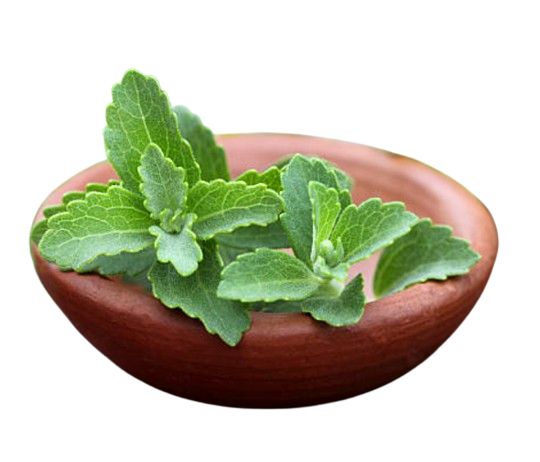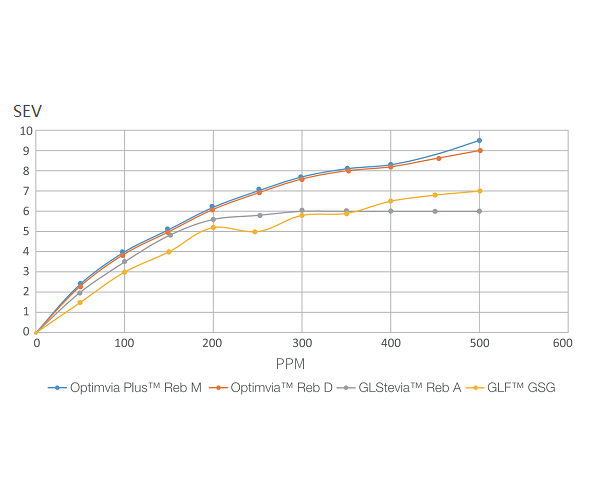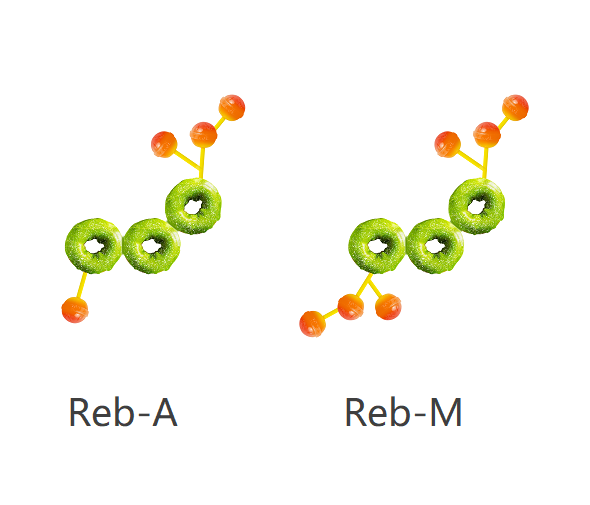Reb-A: The Powerhouse of Stevia

Stevia, a natural sweetener derived from the leaves of the Stevia plant, has gained popularity in recent years as a healthier alternative to traditional sugar. Among the many compounds in stevia, one of the most potent and sweetest is rebaudioside A, also known as Reb-A. What are the characteristics of Reb-A? What are its comparisons with another popular stevia compound, Reb-M, and how can you incorporate this natural sweetener into your product?
What is Reb-A?
Reb-A is a steviol glycoside, which is a natural compound found in the leaves of the Stevia rebaudiana plant. It is renowned for its intense sweetness, estimated to be 200-400 times sweeter than sucrose. This makes it a popular choice for individuals who want to reduce their sugar intake while still satisfying their sweet cravings. Reb-A is also considered safe for consumption, with studies supporting its use as a sugar substitute for those looking to manage their weight or control their blood sugar levels. Additionally, it is heat-stable, making it suitable for use in cooking and baking.
Reb A vs Reb M: What's the Difference?
Reb-M, another steviol glycoside found in stevia, has become popular recently as an alternative to Reb-A. While Reb-M is also known for its intense sweetness, it is believed to have a cleaner taste and less bitterness compared to Reb-A. One of the main differences between Reb-A and Reb-M is their chemical structure. Reb-M has two more glucose groups than Reb-A.


In terms of sweetness, Reb-M is estimated to be 200-350 times sweeter than sucrose, while Reb-A is 200-400 times sweeter. This means that both compounds are extremely sweet, with Reb-A potentially having a slight edge in sweetness. Additionally, Reb-A offers higher cost-effectiveness and has been extensively studied for its safety and efficacy as a sugar substitute. This makes it a trusted choice for those looking to reduce their sugar intake without compromising on taste.
Here are 5 steps on how to use Reb-A in your product:
1. Understand the regulatory landscape: Before adding Reb-A to your product, it is important to understand the regulatory landscape surrounding its use. In the United States, Reb-A is considered Generally Recognized as Safe (GRAS) by the Food and Drug Administration (FDA) and can be used as a sweetening agent in various food and beverage products.
2. Determine the concentration: Depending on the application and desired sweetness level, you may need to adjust the concentration of Reb-A. It can vary depending on the sweetness level required. It is essential to conduct sensory evaluations and taste tests to determine the optimal concentration of Reb-A for your product.

3. Consider flavor interactions: While Reb-A is a high-intensity sweetener, it can have a slightly bitter aftertaste when used in high concentrations. To mitigate this, consider using flavor enhancers or masking agents to improve the overall taste profile of your product. Additionally, you may need to adjust other ingredients, such as acids or salts, to balance the flavor profile and achieve the desired taste.
4. Optimize the formulation process: When incorporating Reb-A into your product, it is essential to optimize the formulation process to ensure uniform distribution and stability. Consider factors such as pH, temperature, and processing conditions when formulating products with Reb-A. Additionally, testing the shelf stability of the product over time can help you determine the best formulation for your specific needs.
5. Highlight the benefits of Reb-A: When marketing your product, be sure to highlight the benefits of using Reb-A as a sweetener. Emphasize its zero-calorie content, natural origin, and high sweetness level to attract health-conscious consumers looking for healthier alternatives to sugar. Positioning your product as a healthier and more sustainable option can help differentiate it from competitors and attract a loyal customer base.
Related Recommendation
All images in this article are sourced from: GL Stevia, Pexels